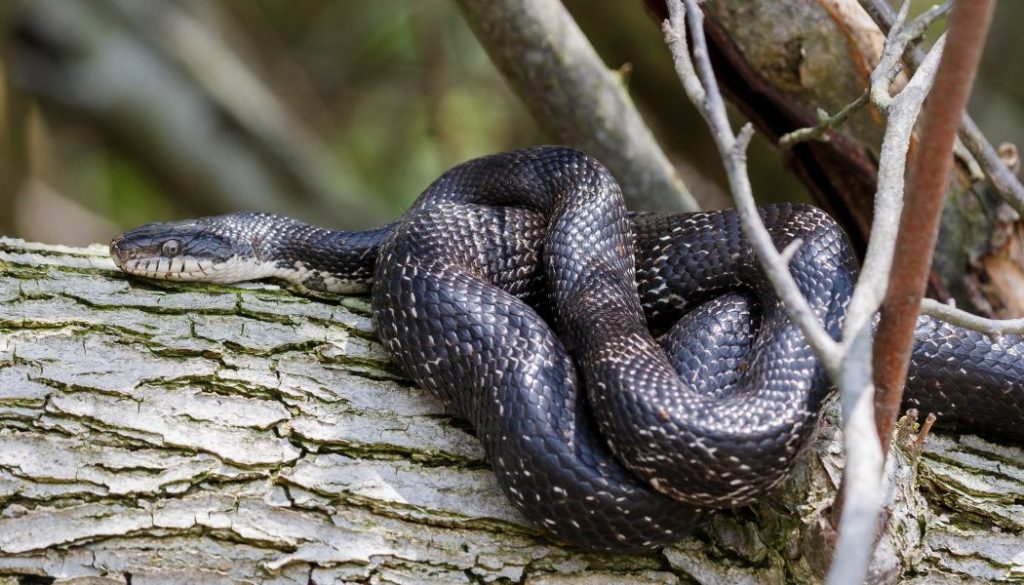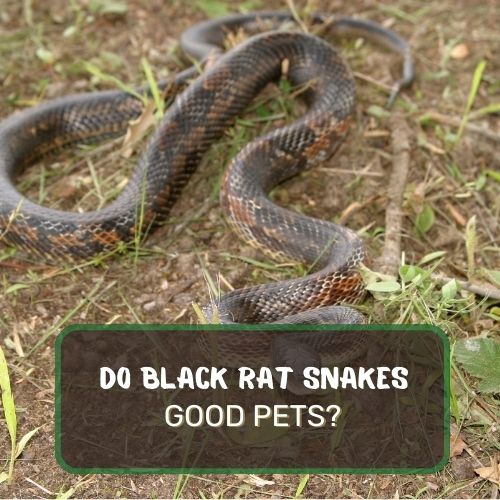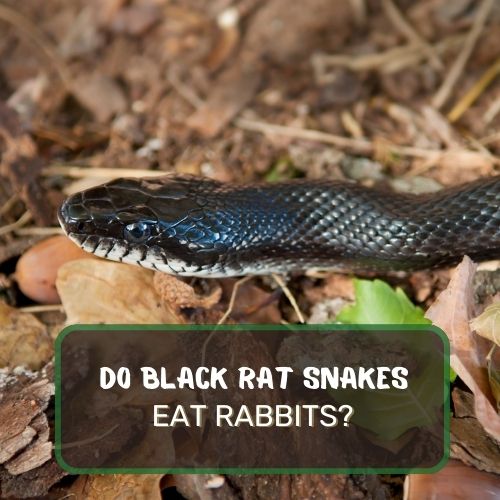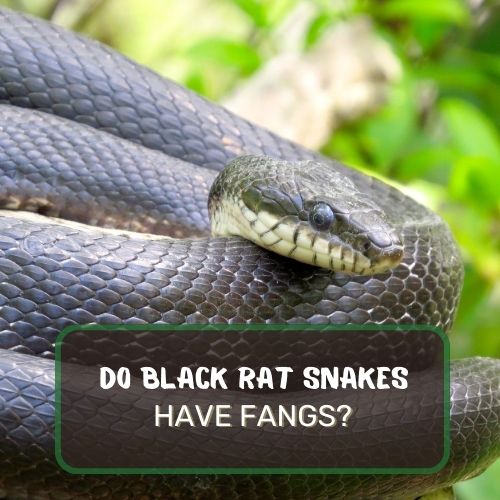Welcome to a fascinating journey into the world of black rat snakes and their remarkable tree-climbing abilities!
This article delves into the intriguing aspects of these snakes, exploring their unique physical adaptations, hunting techniques, and the vital role they play in controlling bird and rodent populations.
Yes, black rat snakes are proficient climbers. They scale trees skillfully using their strong muscles and specialized belly scales, hunting for birds, eggs, and small mammals, and effectively controlling rodent populations. Their climbing ability is a key aspect of their survival and ecological role.
We’ll compare their skills with other climbing snakes and uncover the secrets behind their muscular force and specialized belly scales.
Whether you’re a nature enthusiast or simply curious, this exploration offers a comprehensive insight into one of nature’s most adept climbers.
Join us as we unravel the mysteries of how and why black rat snakes take to the trees.

Table of Contents
Climbing Abilities of Black Rat Snakes
Have you ever looked up into the trees and spotted a sleek, black figure skillfully navigating the branches? It might just have been a black rat snake! These fascinating reptiles are not just ground dwellers; they are also proficient climbers. But what makes them so adept at scaling trees?
The Secret Behind Their Climbing Skills
Black rat snakes possess a unique set of physical adaptations that make them natural climbers. Their strong, muscular bodies and specialized belly scales provide the grip and support needed to ascend vertical surfaces. Imagine the snake as a skilled climber, using every inch of its body to maneuver up the rough bark of a tree. It’s a spectacle of nature’s ingenuity!
Mastering the Art of Stealth
These snakes are not just climbing for fun – they have a mission. Their cryptic black coloration allows them to blend seamlessly with the dark forest floor or tree bark. This camouflage is key to their stealthy approach, making them nearly invisible to unsuspecting prey. It’s like they have their own natural invisibility cloak!
Aerial Acrobatics
When it comes to navigating the treetops, black rat snakes are like acrobats. They can effortlessly move from branch to branch, showcasing their flexibility and balance. This agility is crucial for exploring tree hollows or cavities, which might be home to their next meal or a safe place to rest.
The Impact of Climbing on Survival
Climbing trees is not just a show of skill; it’s a survival strategy. By taking to the trees, black rat snakes expand their hunting ground and access a variety of prey, from birds and their eggs to small mammals. This vertical hunting ground provides them with ample opportunities to feed, which is essential for their growth and survival.
In conclusion, the climbing prowess of black rat snakes is a remarkable adaptation. It’s a blend of strength, stealth, and agility that allows them to thrive both on the ground and in the trees. Next time you’re in the woods, don’t forget to look up – you might just catch a glimpse of these amazing climbers in action!
Techniques used for hunting birds, eggs, and small mammals
Imagine being able to climb high into the treetops with the ease of a seasoned climber, all in search of your next meal. This is the reality for black rat snakes, whose tree-climbing abilities are not just for show but are crucial for their survival. Let’s explore how these snakes use their climbing skills to hunt.
The Hunt Begins
For black rat snakes, the trees are a buffet of opportunities. Their diet mainly consists of birds, their eggs, and small mammals, all of which are plentiful in the arboreal realm. But how do they catch such agile and often alert prey?
Stealth and Precision
These snakes are masters of stealth. They use their excellent climbing abilities to silently approach nests or perches. Their dark coloration blends into the shadows, making them nearly invisible as they inch closer to their target. It’s a game of patience and precision.
The Art of Constriction
Once they’ve zeroed in on their prey, black rat snakes utilize their powerful bodies to constrict and immobilize it. This method is quick and efficient, ensuring the snake can secure its meal with minimal struggle. It’s a testament to their strength and hunting prowess.
Adapting to the Environment
Black rat snakes have adapted to exploit the rich food sources available in the trees. This not only enhances their chances of finding food but also reduces competition with ground-dwelling predators. By diversifying their hunting grounds, they’ve secured a niche that plays to their unique strengths.
The hunting techniques of black rat snakes in trees are a perfect combination of stealth, strength, and adaptability. These skills not only showcase their predatory prowess but also underscore their importance in the ecosystem as controllers of bird and small mammal populations.
Role of muscular force and belly scales
The climbing feats of black rat snakes are not solely reliant on their sheer strength. Two key factors play a pivotal role in their arboreal agility: muscular force and the unique structure of their belly scales.
Muscular Force: A Snake’s Climbing Engine
The sinewy muscles of a black rat snake are akin to the engine of a powerful car. These muscles contract and extend with incredible precision, enabling the snake to grip and release tree surfaces effectively.
Think of it as a series of calculated, muscular waves propelling the snake upwards. This muscular force is crucial, especially when navigating the smooth surfaces of tree trunks where footholds are scarce.
Belly Scales: The Climbing Gear
The underbelly of a black rat snake is lined with specialized scales known as scutes. These scales are not just for protection; they are intricately designed to provide traction.
As the snake moves, its belly scales catch onto the rough textures of the bark, acting like climbing gear. This mechanism allows for greater control and stability, even on the most challenging surfaces.
Combining muscular force with the gripping power of their belly scales, black rat snakes conquer heights with an ease that belies the complexity of their movements. It’s a fascinating blend of biology and physics, showcasing the snake’s evolutionary adaptation to its environment.
Comparison with other climbing snakes
While black rat snakes are remarkable climbers, they are not the only serpents adept at scaling heights. Let’s compare them with some other notable tree-climbing snakes:
List of Climbing Snakes
- Green Tree Python: Known for their striking green color, these pythons use their prehensile tails to anchor themselves while navigating branches.
- Boomslang: Residing in the trees of sub-Saharan Africa, Boomslangs are agile climbers, using their slender bodies to move swiftly among the foliage.
- Eastern Rat Snake: Similar to their black cousins, Eastern rat snakes are adept climbers, utilizing their strong bodies to scale trees in search of prey.
- King Cobra: The world’s longest venomous snake, King Cobras, can climb trees with surprising agility, often hunting for tree-dwelling animals.
- Brown Tree Snake: An invasive species in Guam, these snakes are notorious for their climbing ability, often causing ecological imbalances by preying on birds and small mammals.
Each of these snakes has evolved unique climbing techniques suited to their environments and lifestyles. While some, like the Green Tree Python, rely more on their prehensile tails, others, like the King Cobra, combine strength and flexibility to reach heights.
This diversity in climbing methods highlights the incredible adaptability of snakes in different habitats and their evolutionary ingenuity.
Role in controlling bird and rodent populations
Black rat snakes play a crucial role in maintaining the ecological balance in their habitats, particularly through their impact on bird and rodent populations. As skilled climbers, they access bird nests high in trees, preying on eggs and fledglings.
This predatory behavior, while seemingly harsh, is vital for controlling bird populations, ensuring they don’t grow to unsustainable numbers.
On the ground, these snakes are just as effective. Their diet includes various rodents, which are known for rapid reproduction and the potential to become pests. By preying on mice and rats, black rat snakes keep these populations in check, indirectly aiding in the protection of crops and stored grains from rodent damage.
This dual role, both in the trees and on the ground, highlights the black rat snake’s importance as a natural pest controller. Their presence helps maintain a healthy balance in the ecosystem, proving that every creature, no matter how feared or misunderstood, plays a significant part in the intricate web of life.
Conclusion
As you’ve discovered, black rat snakes are not just ground dwellers; their adept climbing skills allow them to hunt and thrive in the trees.
This behavior plays a crucial role in balancing ecosystems by controlling bird and rodent populations. Remember, every creature, including these fascinating snakes, has an important part in nature’s complex tapestry.
So, next time you’re outdoors, keep an eye out for these remarkable climbers and appreciate their unique contribution to our natural world.




0 Comments